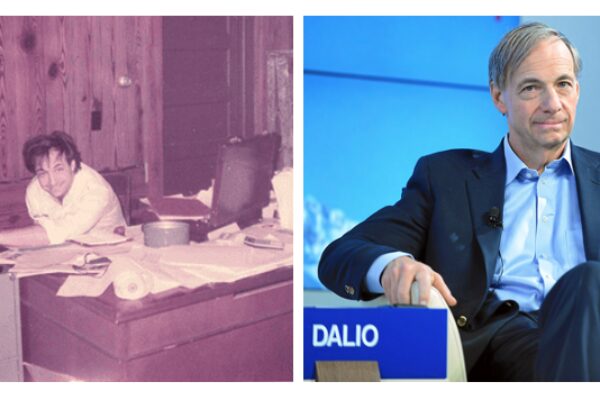
I spend most of my time thinking about how to run companies well. Of course a fair amount of that time is spent absorbed in the particular challenges of running this firm or that firm, and of navigating the specific terrain that a given client or venture has encountered. But an awful lot of time too is spent thinking about the more general patterns of how to run companies well, asking what’s universal, what’s a function of specific types of businesses or stages of evolution, and so on. In service of this part of my work, I read almost anything that promises to shed light on some aspect of this question – from Peter Drucker to Elliott Jaques to Frederick Taylor to…
… The Millionaire Real Estate Agent, which Keller Williams Realty founder Gary Keller co-authored with Dave Jenks and Jay Papasan. Most people who know me even a little bit would probably be surprised that I’d be recommending this book, so I’d like to explain why it is one of the best business books I know, and one of the books that best reflects my own beliefs about what it takes to run a business – any business – effectively.
There are 9 patterns that Millionaire Real Estate Agent explores, with a great deal of granularity, which are as relevant in any other field as they are in real estate sales.
1. Work backwards from long-term aspirations through a series of eras that each revolve around distinct imperatives. Keller describes the three distinct stages of “earn a million” (i.e., $1m gross revenue), “net a million” (i.e., $1m net income), and “receive a million” (e.g., $1m return on equity passive income, vs. income as a producer). These stages are like distinct eras in the development of what is ultimately a lasting, highly profitable business for the owner. The way to “receive” leads through “earn” and “net.” In each era, there are a distinct set of challenges and dynamics. At the “earn” stage, the primary challenges are personal production of leads and listings, which are then serviced by the producer/owner/doer. The people questions at hand are along the lines of “when can I afford an assistant to gain more leverage?” At the “net” stage, the producer becomes the leader of a team with specialized roles – e.g., a buyer specialist. At this stage, the producer/owner must build systems that enable the team to consistently deliver the right outcomes. This creates the foundation for a central dynamic of finding, grooming and aligning the leader(s) of the operating business at the “receive” stage.
2. Translate strategic concepts into a management system that encompasses the practices needed to operationalize each concept. Strategic concepts are ideas that signify and unify a wide range of concrete actions so that they add up to a big result. Strategic concepts are extremely valuable, but only when they are accompanied by a management system sufficient to convert them into action. When Keller posits a strategic concept such as the idea that seller listings are the core driver of profitable growth, he then translates that concept in a system that includes roles (e.g., who handles the buyer side of the business), processes (e.g., for lead generation), metrics (e.g., ways of defining the relevant conversion rates) and so on.
3. Build equations that decompose financial results into a set of drivers. The most reliable way to achieve an outcome is to see clearly what’s needed to deliver that outcome and isolate, diagnose and address variances whenever they arise. A performance equation enables one to operate in this way. Keller breaks down key results – e.g., net income – into a long series of drivers that, as a matter of mathematical identity, add/multiply to comprise that result. For instance Keller’s “basic formula for the economic model of the millionaire real estate agent” (p. 131) enables one to see whether a variance relates to insufficient seller listing appointments, insufficient conversion rate of those appointments into listings taken, insufficient conversion of those listings into sales, etc. Each of these represents a different kind of issue, which would need to be addressed in a different way.
4. Distill each key element of the business into a set of standards that can be achieved systematically. What does it take to deliver great service? “Your unique services are a by-product of your standards. Whether you realize it or not, you have set beliefs on how quickly you should respond to a buyer inquiry, how a listing interview should be conducted, or how a difficult contract negotiation should be handled. Most successful real estate agents hold themselves to unwritten personal standards in these areas without always being able to articulate them quickly. Yet they all seem to be able instantly to recognize the moment their standards have been breached.” (p. 60). If those standards can be articulated explicitly, and then translated into a set of mechanisms to deliver on them consistently, then great service becomes scalable. Sometimes this means specifying a uniform process (e.g., a specific protocol for answering the phone). Sometimes the process may vary, and the consistency comes from some other source, such as validated capabilities (e.g., only have someone perform a certain role when they’ve demonstrated that they understand the standard and they can achieve it, but recognize that different people will achieve it in different ways).
5. Figure out what the rate-limiting factors are at each era of a business’s evolution and focus rigorously on those factors. A tool like a performance equation can be bewildering because it encompasses so many variables. Surely, they can’t all be optimized at once! One needs quality judgments about what matters most at any given point, which are judgments about what the rate-limiting factors are in achieving the results critical to that stage of business. In the “earn a million” stage, for instance, quantity of leads is likely to be more of a rate-limiter than quality of leads: “The octane of your fuel is irrelevant if you don’t have enough to get you to your destination.” (p. 135)
6. Recognize that most actions are the product of habit, and relentlessly build the right habits. Most of what we do, we do without thinking about it. As a result, we are only as good as our habits. A significant part of achieving a rapid trajectory of growth is shifting focus from what needs to be achieved right now to what habits can I build now that support the systematic execution of what I’ll need to be achieving at the next level out. Versions of this imperative exist in any field of endeavor and at any level of accomplishment. Millionaire is a powerful example because it illustrates so concretely what it looks like to apply “Big Habits” that support the next level of growth – e.g., how to focus on the continuous generation of leads in a way that will support a business through different stages of growth and up and down cycles in the market.
7. Clearly visualize what each hire needs to achieve – now and over time – and what that implies for what the individual needs to be like and how they need to be managed. Keller paints a picture of what it means for a person’s “natural abilities, skills, experience, and aspirations all [to] line up around the job description and give them every reason to succeed at a very high level.” (p. 161) Visualizing clearly what it looks like for talented people to be leaning beyond their job even while fulfilling it – e.g., “pushes to get answers,” “shares your goals and fulfills your needs as a natural byproduct of fulfilling their own,” “pushes you constantly” – helps in making dynamic hires whose own rate of personal growth mirrors the growth of the business, so that each kind of growth generates the other. Keller articulates clearly a cycle of consultation in which people own goals, assess with their managers weekly how they’ve done against their goals, reflect on the gaps – and in which managers distinguish clearly between accountability for what a person can be expected to do and training to expand the range of what a person can be expected to do.
8. Distinguish being a player on the field building a business from being a designer of the business. Throughout the development of a business, owners have the challenge of distinguishing their work in the business (e.g., generating leads, serving clients) and their work on the business (e.g., determining what leadership is needed, shaping plans and building strategies). In the “earn” stage, the challenge relates mainly to getting outside the day-to-day press of execution to develop clear models that inform that execution. In the “net” stage, the challenge progresses to systems building and hiring people into the business who can execute through these systems while continuing to refine the systems. At the “receive a million” stage – as the owner’s focus shifts from active income to passive income – the work on the business becomes the dominant focus, and evolves from building systems, making hires, etc., to ensuring the right management is in place with the right brief, a brief that includes a “how” component (e.g., standards of service, a way of managing the business) as well as a “what” component (e.g., growth, profitability). This corresponds to a shift from management to governance.
9. Acknowledge that at critical points on the journey, one needs to unlearn assumptions that worked well enough up until that breakpoint. Part of why relatively few people reach the highest levels of achievement in any given field is because they become too attached to what works well for them. Generally the logic of goal attainment at level N + 1 is fundamentally different from the logic of goal attainment at level N. Keller describes these transitions not just conceptually, but in terms of their specific dynamics at different stages in the Millionaire journey – e.g., moving from relentless provision of service to relentless focus on standards of service; transitioning from leading a business to shaping the context in which others lead a business. Each field has its own versions of these classic points of transition – e.g., the evolution from sales to sales management, from a researcher pursuing a question to a thinker defining a research agenda for a field – and it is important in any field to think as precisely about where and how unlearning matters as Keller has here in the field of real estate sales.
Millionaire Real Estate Agent is a more powerful vehicle for learning many of these lessons than a more general text might be, precisely because the specific focus on real estate sales makes each lesson so concrete. Even if one is in a different business, it isn’t difficult to take each specific point that Keller and his co-authors make and hold their models up as a mirror to ask if one has an equally powerful way of looking at the corresponding question in one’s own business. Generally the answer will be no.
At Incandescent, Millionaire Real Estate Agent is on our core reading list because it provides such an elegant model of management. It models how good management requires both a mastery of generalizable concepts, such as the nine above, and a mastery of the specific industry context that enables these concepts to be embodied in precisely designed practices. I aspire for us to work with clients and build businesses, including our own, with the kind of graceful thinking and systematic execution that Keller and his co-authors exemplify in this book. It deserves wide attention and careful study.



